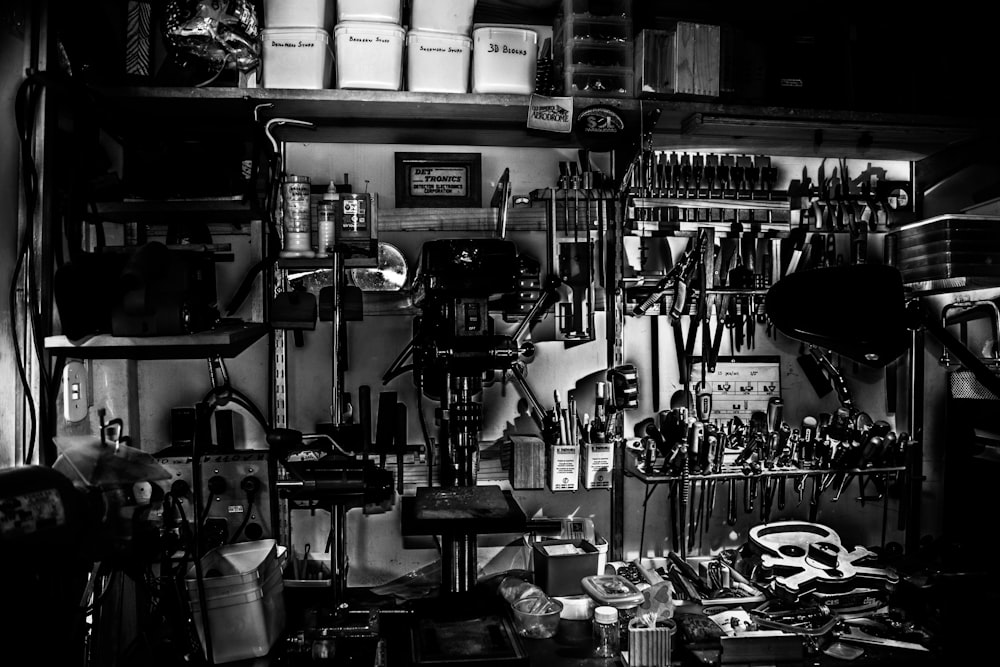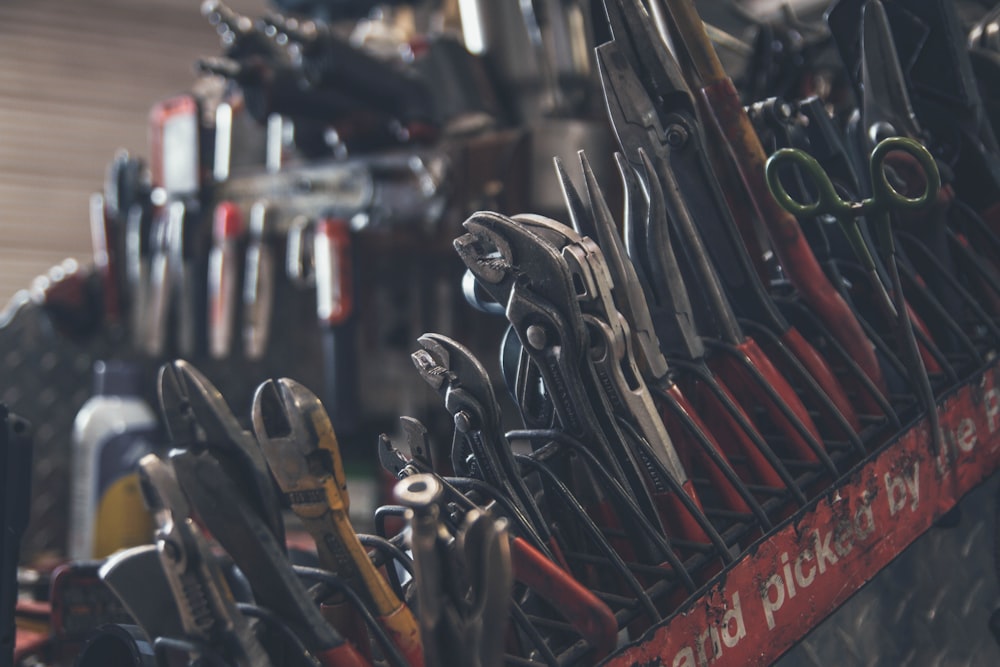Garage doors are deceptively simple. With preventive maintenance, you can ensure your garage door lasts for years. Garage doors are also very heavy. Therefore, use precaution, and call for professional help to avoid injuries. Read on to explore 11 great ways to keep your garage door in good working order!
Why Preventive Maintenance?
It’s a lot easier — and cheaper — to keep your garage door running than it is to repair it when it breaks. With the right amount of preventive maintenance, you can ensure your garage door lasts for years to come.
Avoiding costly emergency repairs is one of the best ways to save money as a homeowner.
#1 Check The Tracks
Garage doors are notoriously fickle. If your garage door is old or heavily used, it’s a good idea to check the track alignment from time to time. You can examine the garage door tracks. If you see anything out of the ordinary (bends, cracks, or breaks), your garage door is likely in need of maintenance.
Rule of thumb? If your garage door is crooked, off-balance, or tilted, it’s a sign that your garage door tracks are not in alignment.
Tip: Adjusting a garage door by yourself is usually not recommended. It’s a good idea to bring in a professional: it’s safer and you don’t run the risk of injuring yourself.
#2 Check the Cables
Give your garage door cables a good once-over often. Look for signs of fraying, decaying, or broken strands, particularly near the roller. If you see what looks to be excessive wear, be careful! Garage door cables are under high tension and bear a lot of weight.
If you see any signs of damage, bring in an outside professional to work on your garage door.
Tip: Don’t mess with garage door cables on your own. Garage doors can weigh upwards of 400 pounds — it takes seriously strong cables to lift them.
#3 Check the Rollers
Damaged garage door rollers are often the reason that a garage door may not close or open properly. Garage door rollers are little wheels that track along the side of your garage door. The rollers slide up and down the track in order to raise or close the door.
Depending on what sort of garage door you have, you may have rollers that are either:
- Steel: Noisier (but cheaper) than nylon rollers.
- Nylon: Quieter than steel rollers, resistant to rust, and long-lasting.
Check rollers for signs of deterioration. For nylon rollers, look for cracks, splits, or other signs of damage. Steel rollers are unlikely to crack or split, but check for uneven wear around the bearings. Rust and proper lubrication are perennial concerns for steel rollers as well.
Tip: If you are using steel rollers, weatherstripping (more on that below) becomes extra important. You’ll want to keep excess moisture away from metal whenever possible.
#4 Check Up On Nuts and Bolts
Garage doors are heavy. Regular use of a garage door all but guarantees that nuts and bolts will eventually work themselves loose.
You’ll want to check with your garage door manufacturer regarding proper torque specifications, but if anything is loose: tighten it or call professionals to help.
#5 Check The Lubrication
Screeching sound may indicate that your garage door is in need of lubrication. A garage door has many moving parts: rollers, tracks, hinges, and springs. If you’re using nylon rollers, make sure the metal bearings are properly lubricated. The same applies to springs, tracks, locks, and hinges: lubricate only the ‘contact patches’ of the metal bits.
Once the door is properly lubed, raise and lower the door several times to be sure the lubricant spreads evenly.
Tip: Don’t overuse lubricant — use a clean rag to wipe off any excess material.
#6 Check The Weatherstripping
A working weatherstrip keeps the weather out of your garage! Whether it’s rain, snow, or sand, a weatherstrip is a simple way to prolong the life of your garage door.
Weatherstrips are typically made of rubber. You’ll find that weatherstrips eventually dry out and fall apart. If you notice that parts of your weatherstrip are decayed, broken, or flaky, it’s time to get a replacement.
Tip: Be sure to purchase the right type of weatherstripping for your garage door. If you’re unsure which one to buy, check with the manufacturer of your garage door.
#7 Check Your Automatic Reverse Function
Perhaps the single most important safety feature of any major appliance in your home, the automatic reverse function is probably the most overlooked. Most people never interact with their automatic reverse mechanism except when they trigger it by accident.
Auto-reverse functionality has been a standard feature on all garage doors sold since the early 1980s. This feature prevents the garage door from closing if an object is in the way.
Most systems follow a two-pronged approach utilizing both the opener motor and infrared sensors. If the opener motor senses a certain level of resistance, it automatically reverses the direction of the door. Infrared sensors — little invisible tripwires about 5 inches off the ground — will do the same if the beam is blocked.
Tip: Check your opener motor sensor by placing a 1 ½” block underneath the door. If the door doesn’t reverse after encountering the block, call a technician. To test the infrared sensors, lower the garage door and waggle your foot — but make sure to do it safely — in order to trip the beam.
#8 Check The Paint and Surface
A painted garage door attracts good attention. Take a moment to inspect your garage door for cosmetic damage.

Check the surface for old or peeling paint, flakes, scratches, water damage, and rust. Cosmetic damage can evolve into something more serious. Chipped paint, for example, exposes the wood of your garage door to the elements and can lead to premature wear. Rust spots on a metal garage door can damage the structural integrity of your door and lead to costly repairs.
Tip: Treat your garage door like your car. Give your garage door a quick wash using a gentle cleanser every few weeks.
#9 Watch For Cobwebs (Seriously)
If there’s one place in the home that’s almost guaranteed to have cobwebs, it’s the garage. Keep an eye out for cobwebs, especially near the infrared sensors that control the auto-reverse function on your garage door. More than a fair share of homeowners have called in professional technicians to fix their garage doors only to find a cobweb blocking the photoelectric sensor.
Tip: A quick check for cobwebs works fantastically well as part of your regular garage door maintenance. Vacuuming every few weeks could help.
#10 Look and Listen
Take the time to listen to your garage door. If the door is taking longer than usual to open or close, that’s a good indicator that maintenance is needed. At the same time, listen for unusual, weird, or loud noises coming from the mechanism. Properly-functioning machinery should sound smooth — if your garage door is screaming at you, call a professional.
Tip: Nylon rollers make far less noise than steel rollers. If noise is a major concern, consider swapping to nylon rollers.
#11 Bring In a Professional
Garage doors are complicated, heavy things. If you're looking to delve into the world of garage door maintenance, it's better to do it with a professional at your side. After all, safety is paramount — there's no point risking your health and safety.
Conclusion
When it comes to garage doors, preventive maintenance is cheaper than emergency repairs. Follow the tips listed above to extend the life of your garage door.
For questions or more information, please contact a expert near you by . Feel free to call us at (800) 309-6753 or email us at inquiry@wini.com and one of our experts will contact you promptly.
Get the Latest Insights!
Sign up to stay up to date with latest tips, trends and updates from WIN.












